For many driving enthusiasts, the dream of owning a powerful sports car often feels out of reach due to soaring price tags. Yet, automotive innovation and fierce competition have changed the game, making 300-horsepower performance more accessible than ever.
Today’s market offers several thrilling options that blend exhilarating speed with attainable pricing, inviting more drivers to experience true excitement behind the wheel.
This article dives into the most affordable sports cars boasting at least 300 horsepower—proving you don’t need a fortune to enjoy serious performance.
The Oldsmobile division of General Motors was dissolved over 21 years ago, on April 19, 2004. But the brand hadn’t offered a convertible model for nearly a decade prior to that. Oldsmobile’s final convertible was the 1995 Oldsmobile Cutlass Supreme. Let’s look at one such example to see if Oldsmobile saved the best for last. And fittingly, it’s in Dark Teal Metallic—a 1990s period-correct color if we’ve ever seen one.
Featured on AutoHunter is this low-mileage 1995 Oldsmobile Cutlass Supreme Convertible. The car is being sold by a private seller in Orland Park, Illinois, and the auction will end Tuesday, July 15, 2025, at 11:15 a.m. (PDT).
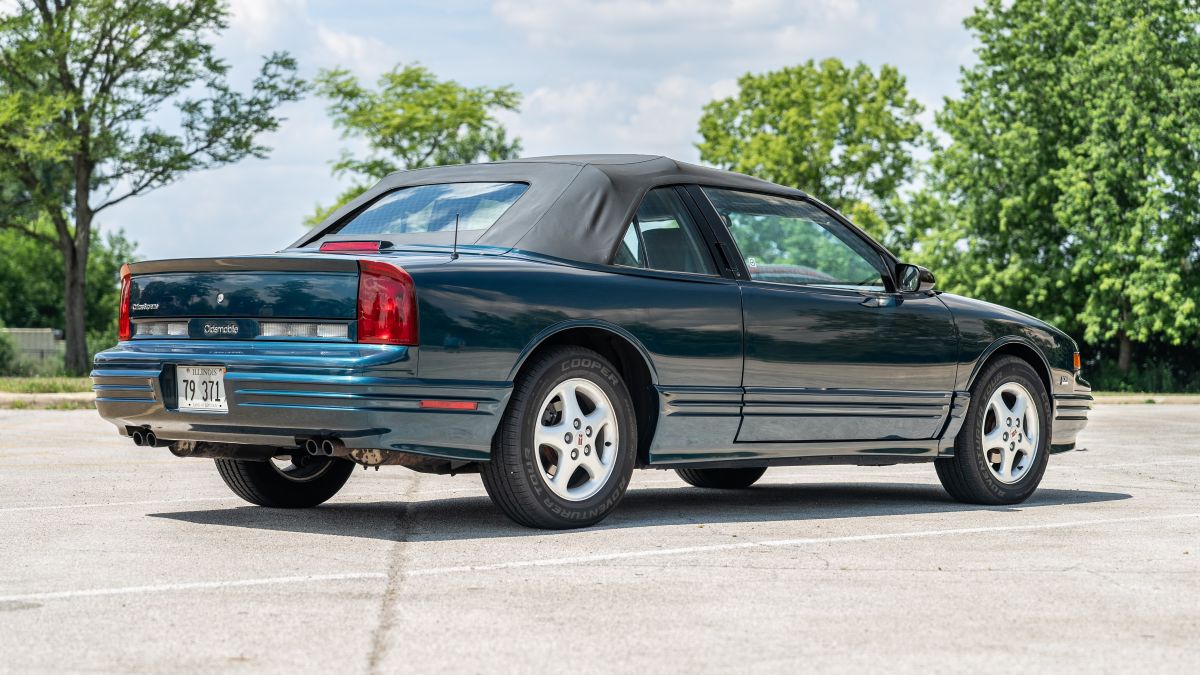
From 1988 through 1997, the Cutlass Supreme shared the front-wheel-drive General Motors W-platform with the Buick Regal, Chevrolet Lumina, and Pontiac Grand Prix (similar to the one I recently featured). One of the key initial marketing programs for the Cutlass involved using it as a pace car for the 1988 Indianapolis 500. One ad said, “The first car to cross the finish line at Indy will be a Cutlass Supreme.”
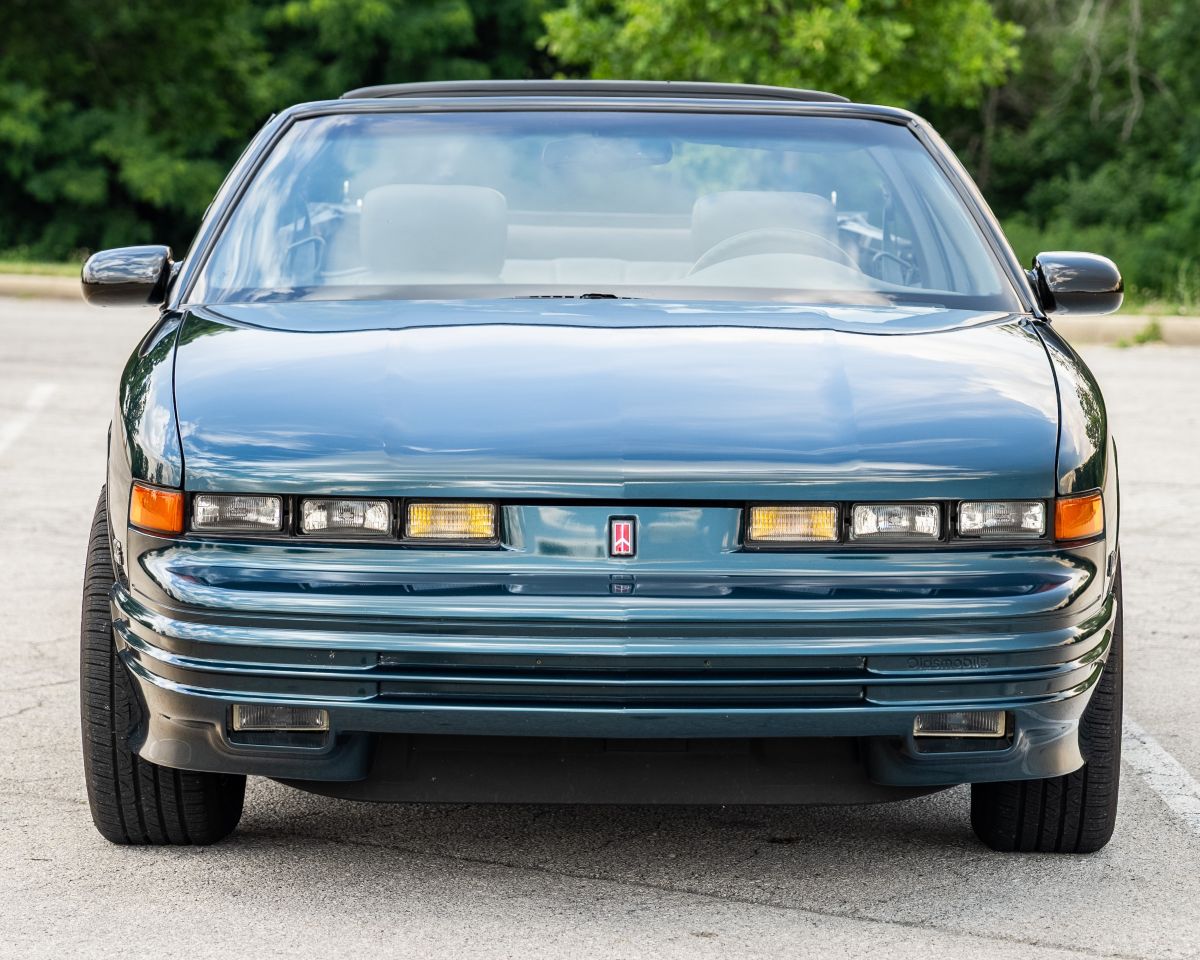
The W-body Cutlass could be ordered as a four-door sedan, a two-door coupe, or a two-door convertible. The convertible “conversions” were carried out via a partnership with a company called Cars & Concepts. One of the most noticeable characteristics of the drop-top was its prominent B-pillar, which remained in place even when the top was down. According to a story from Hagerty, the main reason for this feature was the Cutlass had its door handle on the pillar. In order to relocate the handle, the entire door would have needed to be retooled. Instead, designers incorporated a hoop that went up and over the cabin. (Some would later assert that this component was a roll bar, but it was purely aesthetic in nature.)
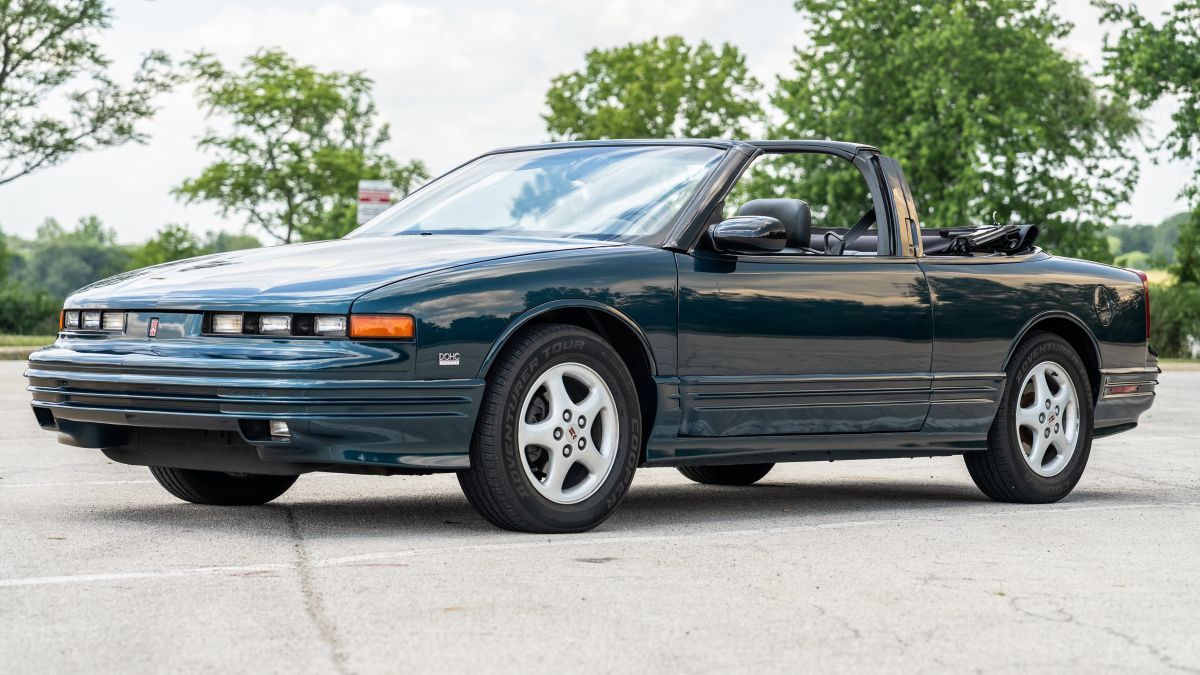
Showing just 16,938 original miles, this 30-year-old survivor appears to have lived a life of garage-kept luxury. From the teal exterior to the charcoal leather interior, it looks nearly flawless in the photos. Under the car’s hood is an LQ1 3.4-liter DOHC V6 mated to a four-speed automatic transmission; the powertrain was rated at 210 horsepower and 215 lb-ft of torque when new.
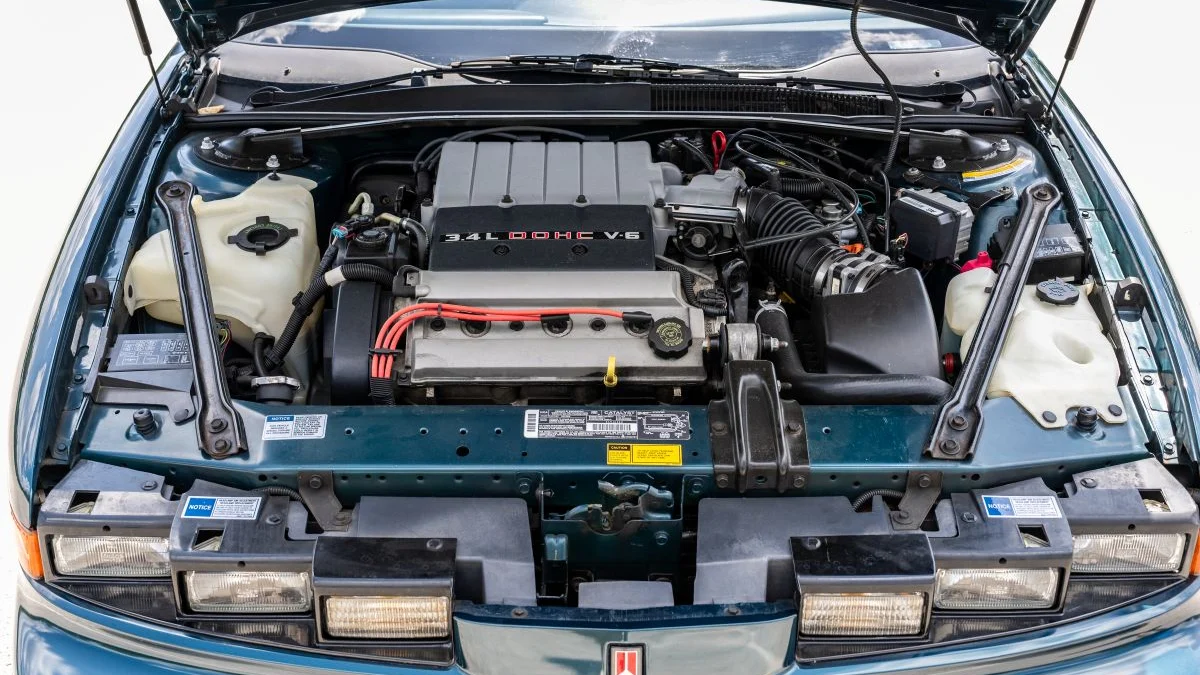
The listing doesn’t give us clues as to why the car has been so well-preserved, but perhaps its original owner had a crystal ball and knew it would be Olds’ last drop-top. The CARFAX report shows accident-free and damage-free history that began on November 3, 1994, in Cortland, Ohio, when the car was first sold. It was later relocated to Florida for several years beginning in 2017—by that time it had only racked up 10,504 miles on the odometer. Finally, it went back to Ohio for a short time before moving to Illinois in 2022. The most recent maintenance on the report was an air conditioning check in July of that year.

I can’t imagine there are many final-year Cutlass Supreme convertibles still on the road today, let alone with fewer than 17,000 original miles. This car is a unicorn and deserves to find an enthusiast owner. Maybe it would look nice in your garage? Or better yet, in a parade during a future holiday weekend?
The auction for this 1995 Oldsmobile Cutlass Supreme Convertible ends on Tuesday, July 15, 2025, at 11:15 a.m. (PDT).
Visit the AutoHunter listing for more information and a photo gallery
If you’re going to the 2025 Carlisle Chrysler Nationals, “the largest Mopar event in the world,” expect to see thousands of vehicles made by the 100-year-old automaker. Some of those will be there courtesy of Chrysler itself, which will be bringing a collection of its production and concept vehicles from decades past as part of its Century of Innovation celebration on July 11-13, 2025.
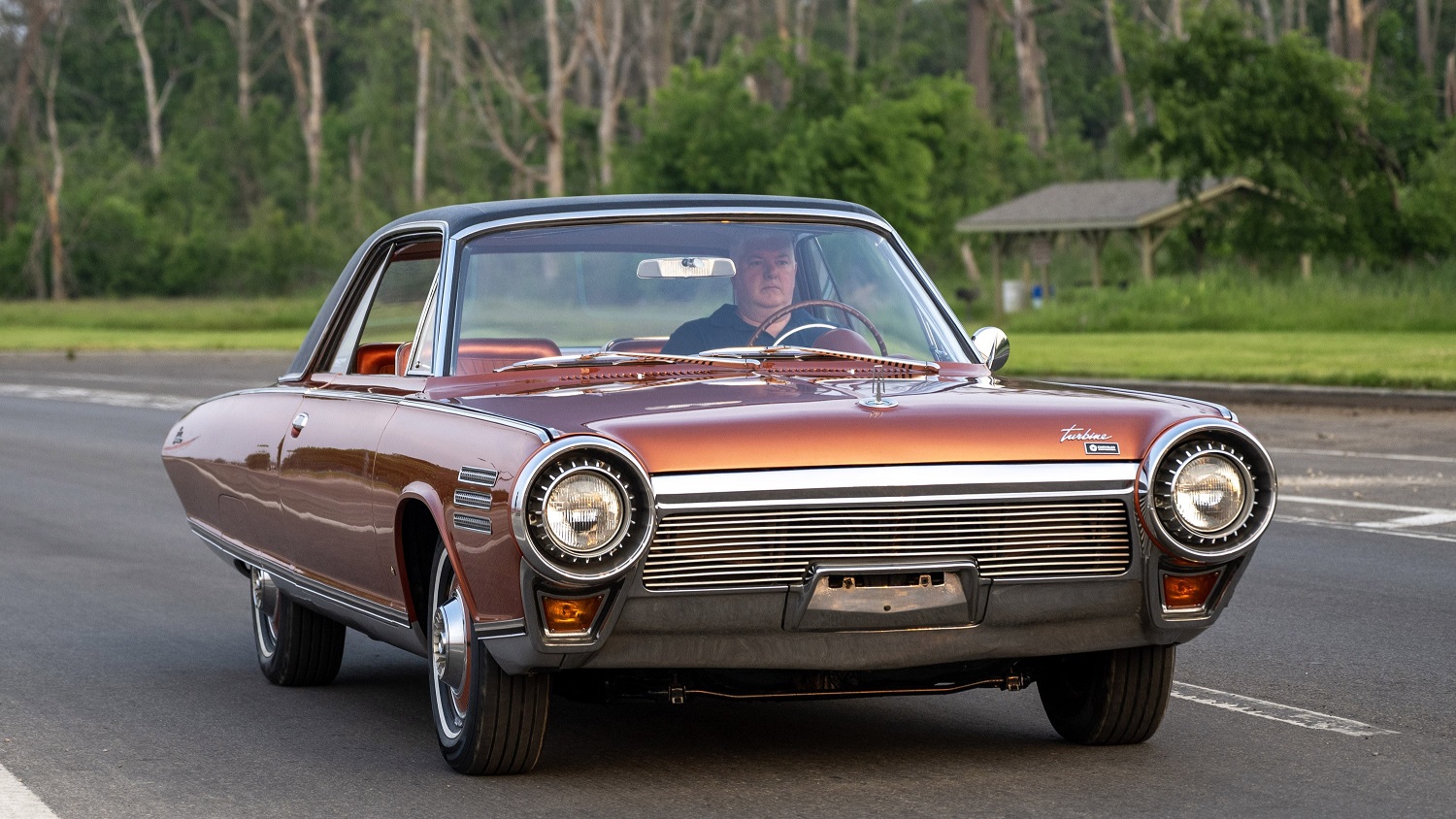
Chrysler officially turned 100 on June 6th. To commemorate such a momentous occasion, the brand launched a social media campaign, released a video series, and held events highlighting its place in and influence on automotive history. On the first day of the 2025 Carlisle Chrysler Nationals, Chrysler CEO Chris Feuell will answer questions about the brand’s past, present, and future during a Q&A session.
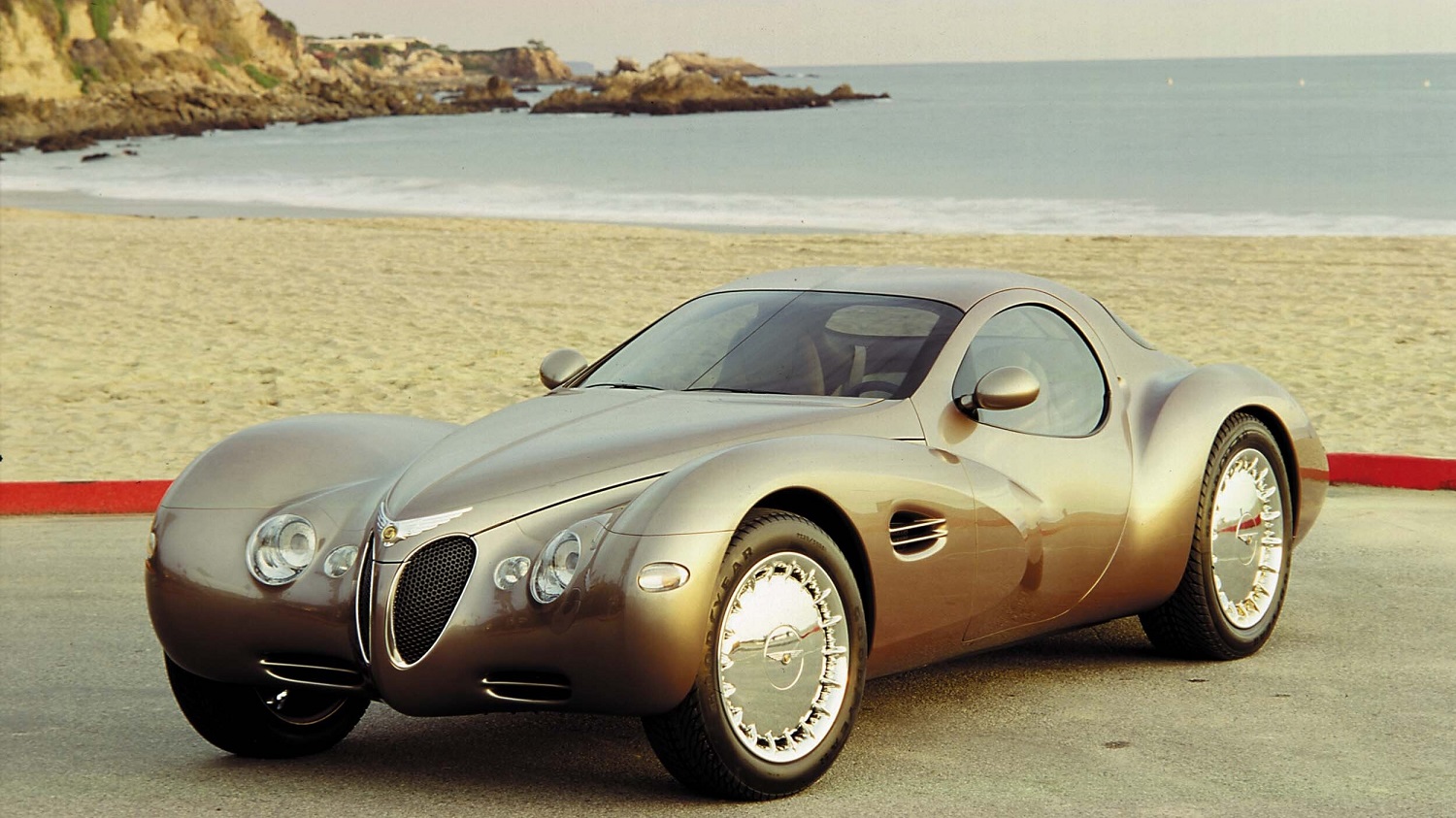
Chrysler’s display at the Carlisle Expo Center will include one of five 1924 Six prototypes, a 1934 Airflow, 1955 300 (a.k.a. the “banker’s hot rod”), 1963 Turbine Car, and the Bugatti-esque 1995 Atlantic Concept.
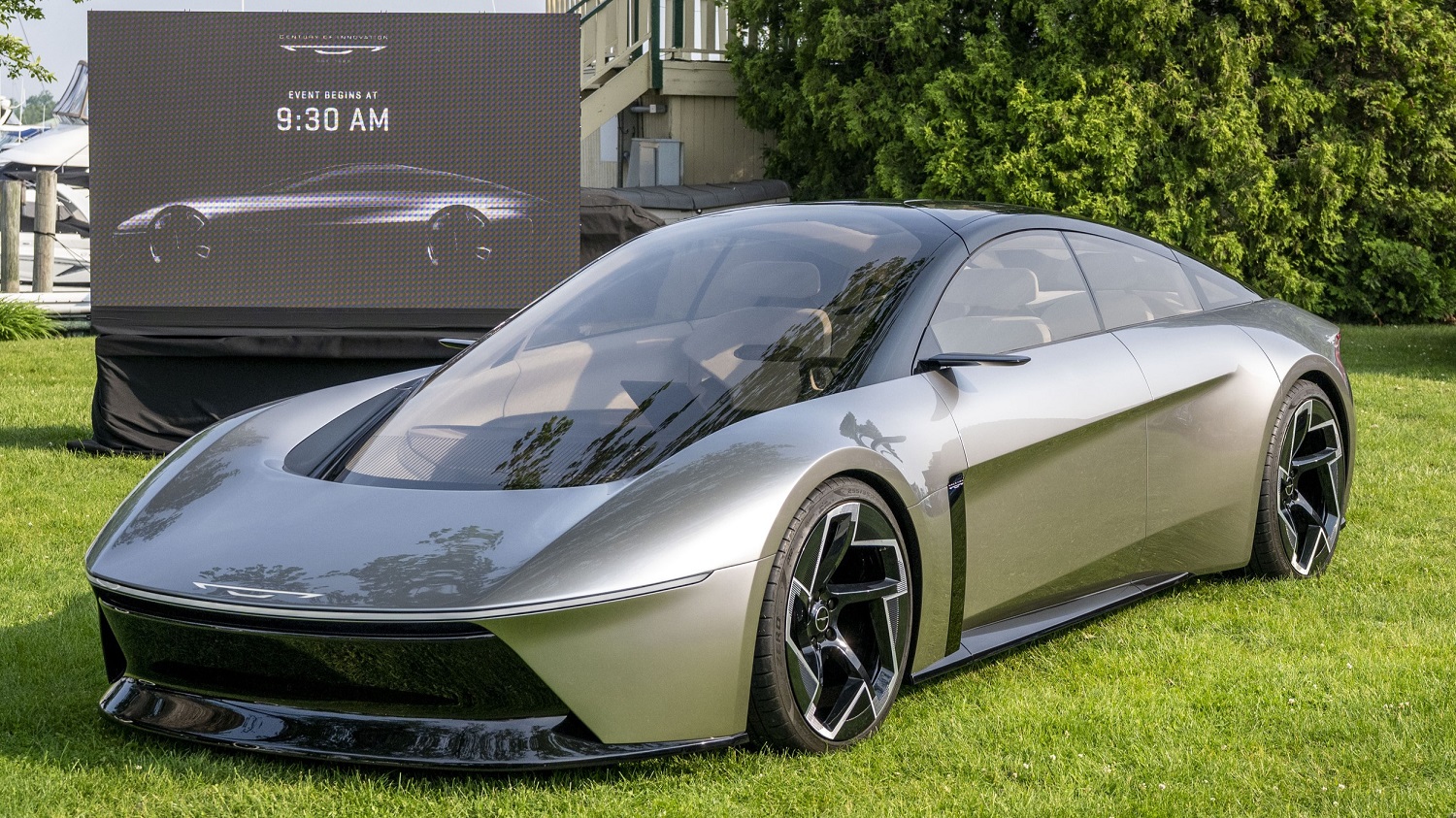
Another one-off Chrysler will be showcasing is the 2024 Halcyon Concept, a preview of the brand’s potential future design which combines “sustainability-driven exterior and interior design, full autonomy paired with personalized driving experiences and futuristic technology.”
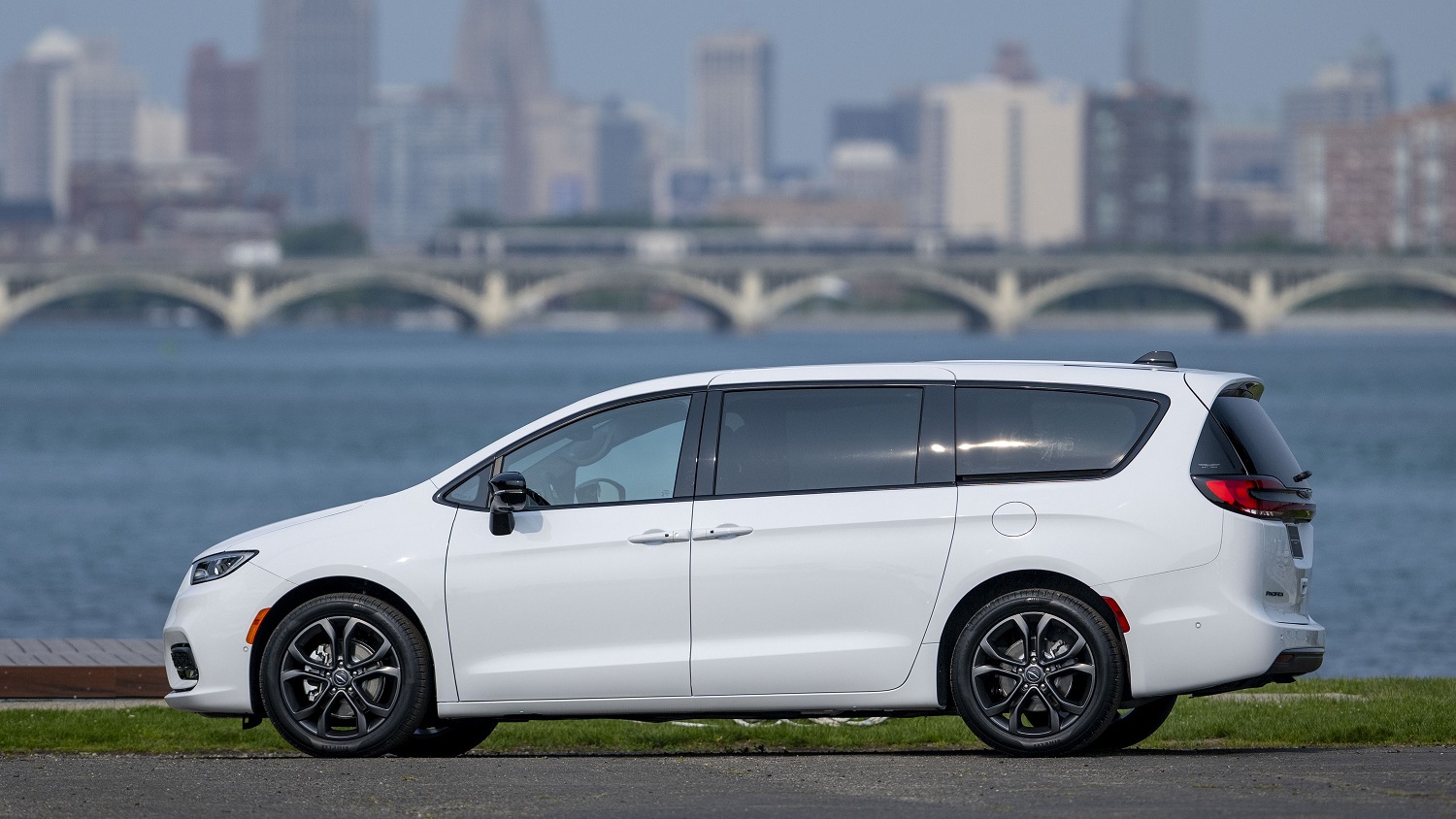
Chrysler will also have a 2026 Chrysler Pacifica 100th Anniversary Edition on-site, decked out with its special fascia, wheels, and badging, and equipped with Stow ‘n Go seats, power-sliding side doors, and power liftgate.
Currently, the gas and plug-in hybrid versions of the Pacifica and its ICE-only Voyager cousin are the only vehicles Chrysler makes. Let’s hope this major milestone in the brand’s history helps pave the way to a brighter future.
This week’s automotive puzzle features a turquoise car that looks great to contemporary eyes, but the color was not a big seller back in the day. Our Pick of the Day features another one of those pretty/unpopular hues, but it’s a color on one of the most popular cars in the hobby. This 1967 Chevrolet Camaro Rally Sport is listed for sale on ClassicCars.com by a dealership in Homer City, Pennsylvania.
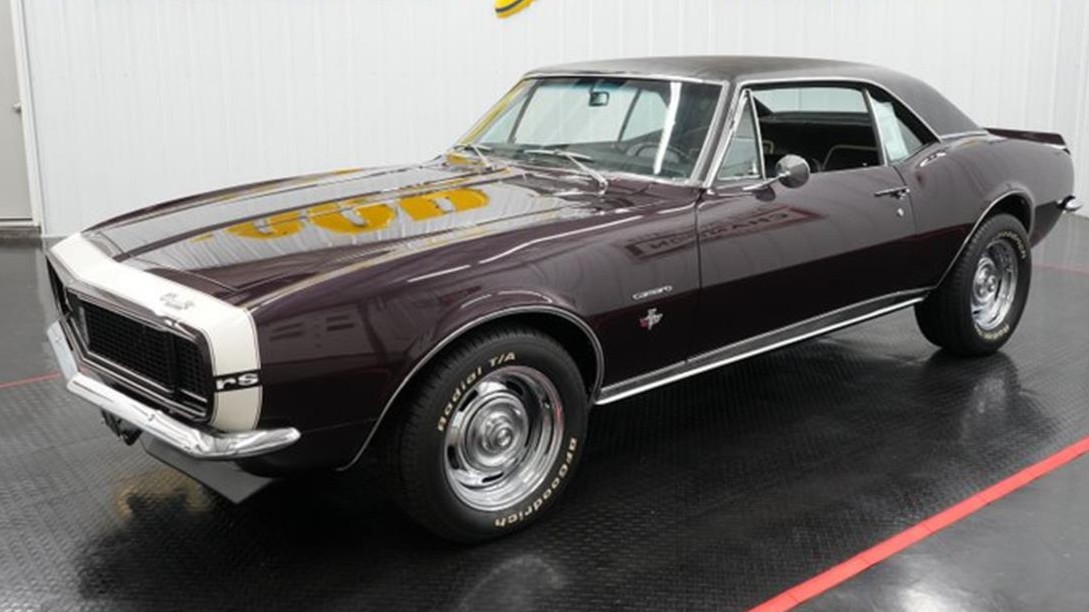
This Pick of the Day will have more personal observations than usual because this car offers several features that I prefer over other model years. That being said, I’ve never been a Chevrolet guy or a pony car guy, but I’ve softened my position over the years. When it comes to first-generation Camaros, I’ve tended to lean into the 1967s for several reasons, even though I don’t necessarily prefer them over 1968-69s. I really like examples with the Rally Sport package because they come off as custom cars of the era—Camaros with touches you’d see at a 1967-68 World of Wheels event. I do think the restyle for 1969 came off great, but it doesn’t have the custom look in comparison; I also think the standard Camaro comes off better than the 1967-68.
A lot of people prefer the ’68 because Chevrolet removed the vent windows for a cleaner look, but that’s not something that makes it more attractive to me. Perhaps it’s due to my age, but I never appreciated the cleaner look sans vent windows. Plus, it seems vent windows offered better ventilation than the Astro Ventilation that General Motors developed to make up for the lack of vent windows.
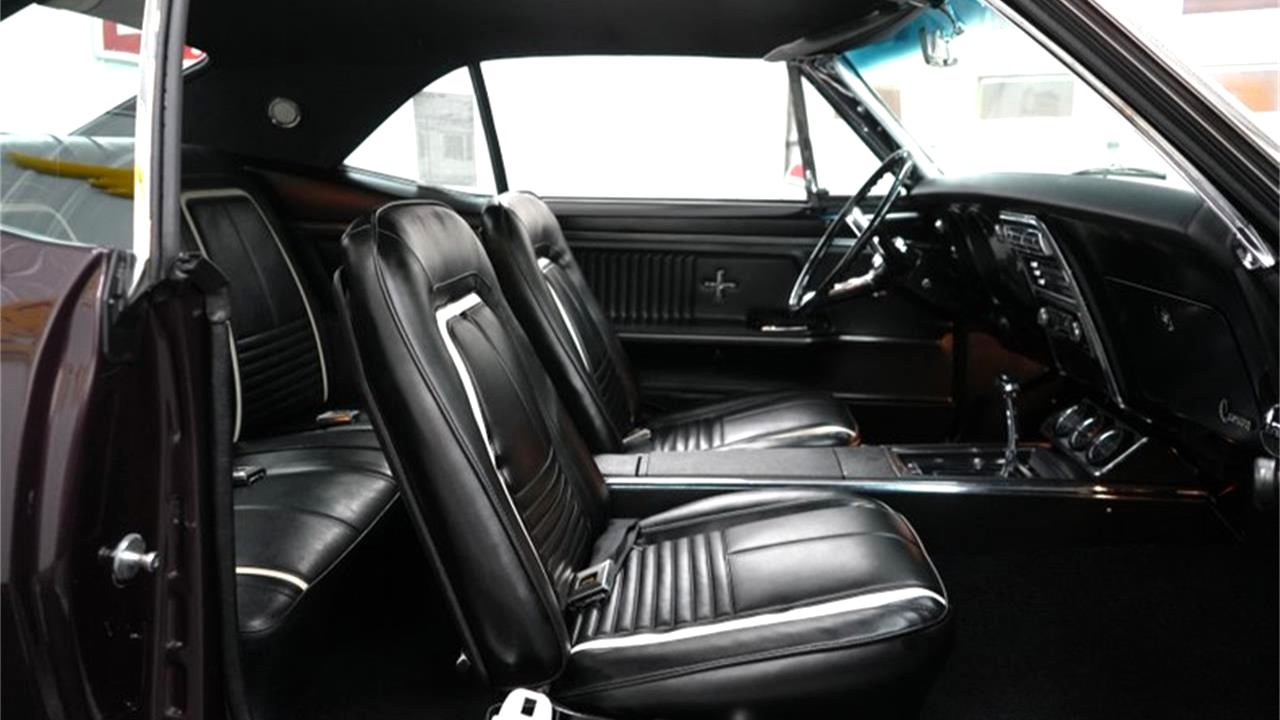
The 1968 Camaros with the RS package used black lower-body trim instead of the chrome of ‘67. I think it comes off as sleeker and, arguably, more tasteful, but the chrome treatment on this vehicle doesn’t bother me.
The available stripe used for 1967 was just that: one stripe, unless you opted for the Z28 performance package. The RPO for the 1967 stripe was D91 and it was standard on Super Sports; in April 1967, it was made available for non-SS (and non-Z28) cars. The stripe carried over into 1968, then was replaced by the D90 stripe in January, which was a similar nose stripe. Having a variety of stripes is great, but it’s not something that pushes me toward one year more than another.
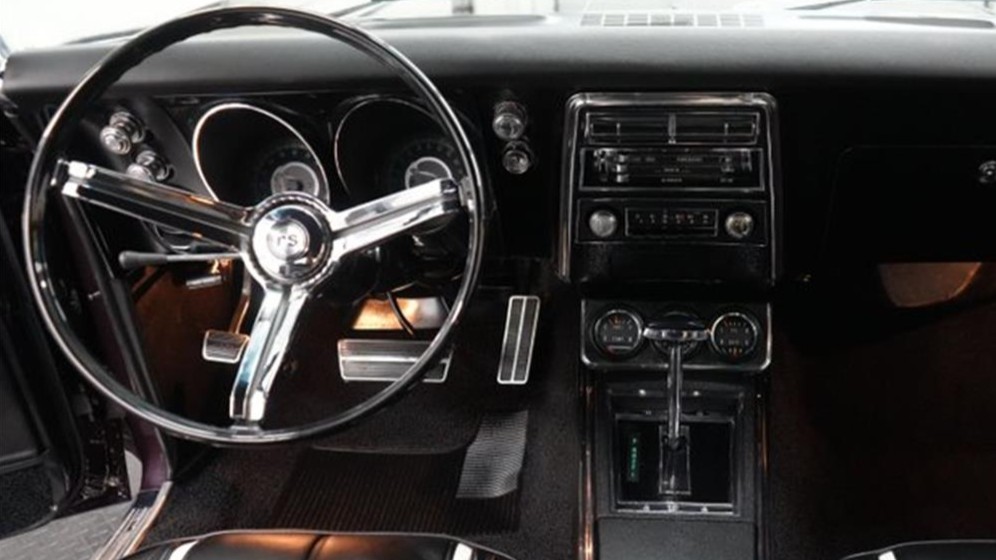
I have never been a fan of the ever-popular Rally wheels, but the 1967s are different than the rest. The key distinction is a shorter, neater hubcap. That piece alone makes the wheel much more attractive to me. I’ve never liked the ribbed, taller hubcap that was used on Rallys in subsequent years.
But what it really comes down to with the 1967 Camaro is a particular color that was only available for Chevrolets in ‘67: Royal Plum. It’s more purple than maroon, but it’s not a regular purple—obviously it’s more like the color of the fruit. To these eyes, it’s absolutely gorgeous, especially with white trim.
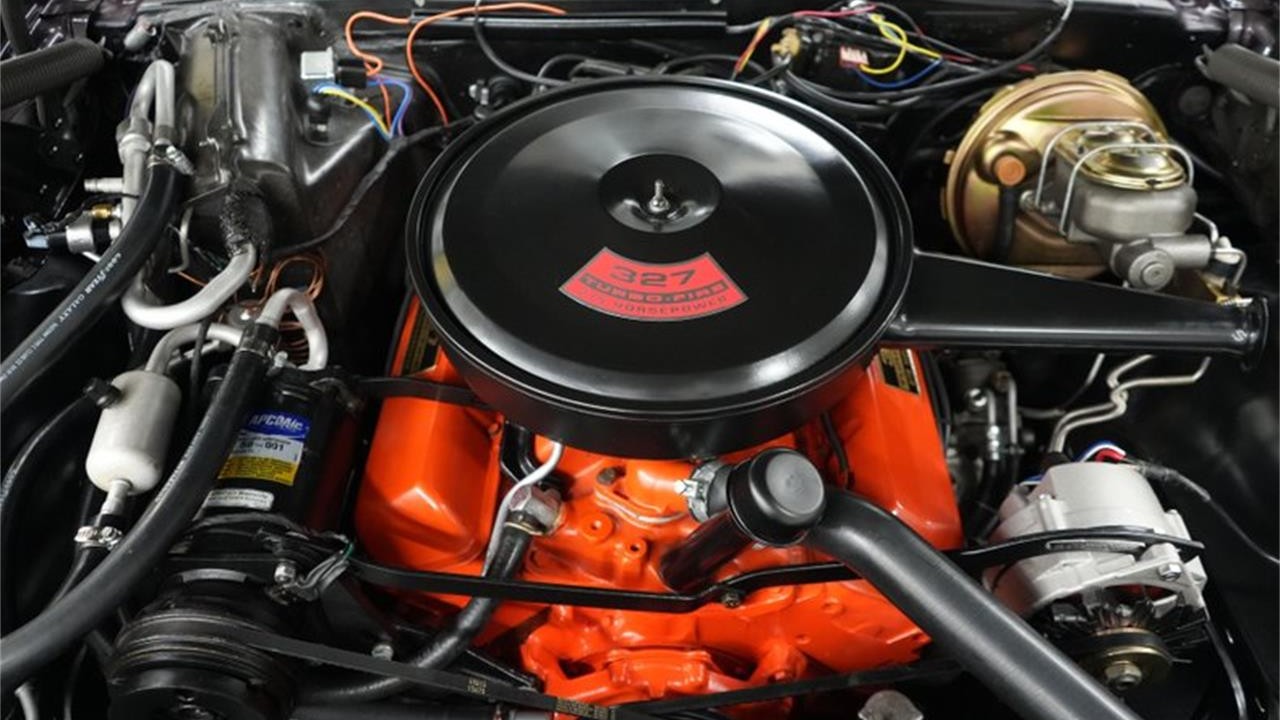
This Royal Plum 1967 Chevrolet Camaro RS shows why this is, in many ways, the Camaro of my dreams. Though not 100 percent factory, this Camaro has presence in spades thanks to the 15-inch Rallys with BFGoodrich Radial T/As (215/60/15 up front, 255/60/15 out back). The top engine available for a regular Camaro was a 327/275, which this appears to have as a “date-correct” replacement backed by a TH350 three-speed automatic (this is an upgrade from the Powerglide that was available in ’67). Other features include an Edelbrock aluminum intake, a Rochester four-barrel, a five-blade cooling fan, a black Deluxe interior, special instrumentation, a console, air conditioning, a three-spoke steering wheel with a tilt column, power steering and front disc brakes, a 10-bolt rear end with 3.08 gears, an aluminum driveshaft, a white D91 stripe, a black vinyl top, a front air dam, a rear spoiler, and more.
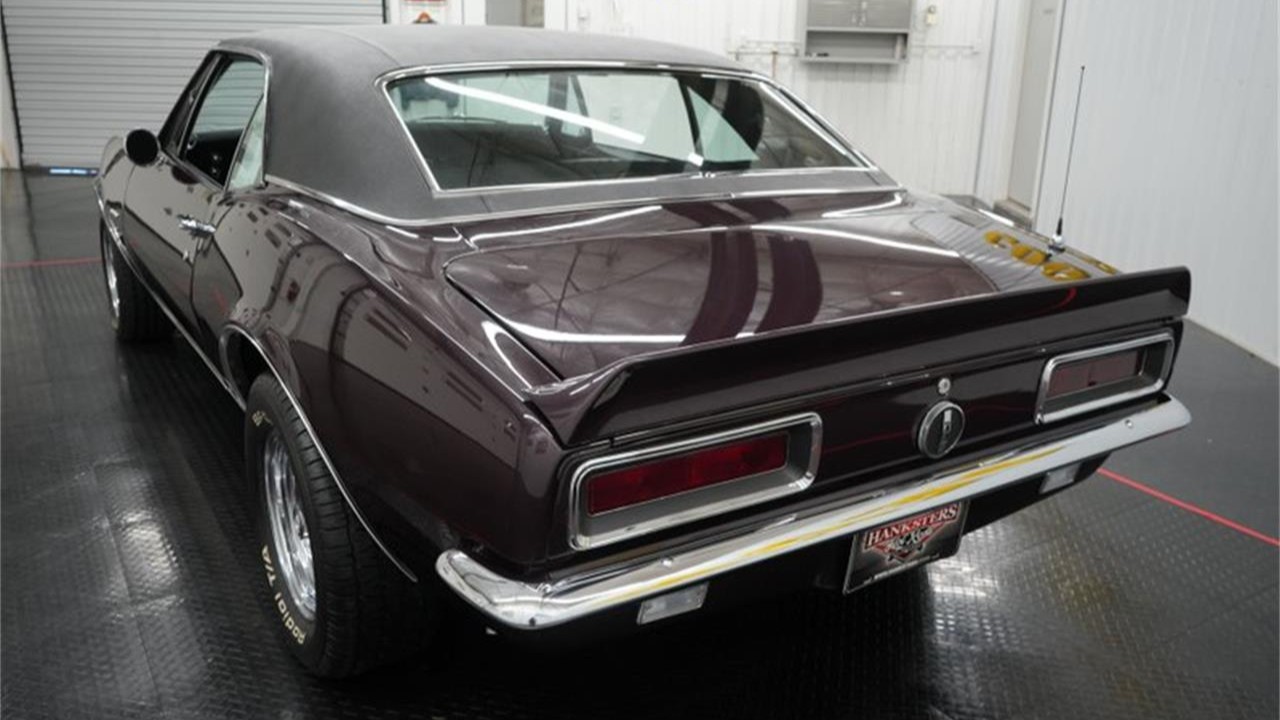
You’d be plumb crazy to miss the opportunity to buy this $67,900 prime piece of pony car. Only 2.7 percent of Camaros were produced in code M Royal Plum, so it’s certainly not something you’ll see often among Hugger Orange and Lemans Blue F-bodies.
Click here to view this Pick of the Day on ClassicCars.com
Every so often, a car comes along that completely defies expectations. Maybe it looks like a sensible family sedan, or perhaps it was designed for practicality rather than performance. Yet, under the hood, these vehicles harbor astonishing power that can leave true sports cars in the dust.
These so-called “sleeper cars” are the ultimate curveball in the automotive world—machines that look tame, but deliver thrilling speed and performance. Their ability to surprise both drivers and onlookers is what makes them so memorable.
Let’s take a closer look at fifteen cars that had absolutely no business being this fast.
The Ford Escape is a popular crossover, with new models typically starting around $30,000. While it offers practicality and reliability, many buyers overlook the excitement and heritage that Italian cars deliver—often at a surprisingly lower price point.
Italian vehicles are renowned for their iconic design, spirited performance, and a driving experience that mainstream crossovers simply can’t match. With a keen eye, enthusiasts can find stylish Italian classics and modern gems that cost less than a new Escape.
If you crave more than just another SUV in your driveway, these affordable Italian cars will inspire you to think beyond the ordinary and embrace automotive artistry.
The 2025 Ford Bronco has generated considerable buzz, promising rugged capability and modern tech.
But with new vehicle prices reaching historic highs, the Bronco’s MSRP can be a tough pill to swallow for many buyers.
Instead, savvy drivers are turning to the used SUV market, where exceptional value awaits.
By opting for a well-chosen pre-owned SUV, you can enjoy comparable reliability, features, and off-road prowess for a fraction of the cost.
Exploring these alternatives doesn’t just save money—it often means getting more vehicle for less, with proven performance and lower depreciation.
Let’s dive into 16 used SUVs that outshine the latest Bronco in value.
This 1929 Ford Model A is a steel-bodied, full-fendered roadster that was built into a hot rod around 1955 according to the seller, who acquired the car in 2023. The seller further tells us the car was stored between the 1960s and the early 2000s, at which time it was recommissioned. The car is powered by a 239ci flathead V8 topped by a Harrell intake, two replica Stromberg carburetors, and Edelbrock heads, and it is linked to a ’39 three-speed manual and a ’40 rear end. The car rides on a “heavy” ’32 front end with a transverse leaf spring and ’40 hydraulic brakes, and it also has ’35 red wire wheels, a chopped windshield, a ’32 grille, a rumble seat, and more as described below. This Model A hot rod is now offered with a clean California title in the seller’s name.

The seller notes the black lacquer on the Henry Ford steel body and steel fenders is thin in areas, and some panels have been repainted. A ’32 grille was added along with a red-painted insert to match the wire wheels. The tilt-out windshield has been chopped ~2.5″, and the car has tubular bumpers front and rear.

The car rides on a “heavy” ’32 front axle with a transverse reverse-eye leaf spring and , and out back is a ’40 rear end with a transverse buggy spring. The brakes are hydraulic drums from a ’40, and the whitewall tires on the ’35 wire wheels are staggered.

The cabin is trimmed in brown upholstery, while the instrument surround is painted white to match the steering wheel.

A tachometer is mounted ahead of the driver, and the remainder of the gauges are set in a gold engine-turned surround. The ammeter does not work. The five-digit odometer shows 15k miles, approximately 2k of which were added under current ownership. Total mileage is unknown.

The seller tells us the 239ci flathead V8 was sourced from a 1942 model and installed in 1955. It is topped by Edelbrock heads and a Harrell intake with two replica Stromberg carburetors from Speedway Motors. Per the seller, the engine and transmission were rebuilt ~9k miles ago, and some fluid leaks are noted.

The ’39 three-speed manual is linked to a ’40 rear end with a faux quick-change cover. The seller states work in 2023 included replacing the clutch components, throw-out bearing, universal joint, transmission synchros, and drivetrain mounts. The dual exhaust system exits ahead of the rear axle.
The car is titled as a 1929 Ford in California using VIN NCS94785.
This 1949 Ford F-1 panel truck was the subject of a custom build in the mid 1980s that included repainting the body in orange with airbrushed murals on each side inspired by the 1968 film The Night They Raided Minsky’s. Power is provided by a 350ci V8 linked to a TH350 three-speed automatic transmission and a 10-bolt rear end. Inside, a bench seat is trimmed in black and white vinyl and accompanied by a cassette radio and a B&M floor shifter, while the rear cargo area has a simulated wood floor along with vinyl-trimmed side panels. Additional equipment includes an Edelbrock intake manifold and carburetor, custom aluminum engine-compartment panels, power steering and brakes, 15″ Cragar wheels, and custom fenderwell headers linked to a dual exhaust system. This F-1 panel truck was acquired by the selling dealer in 2025 and is now offered with build photos and a clean New Jersey title.

The truck was painted orange during the build in the mid 1980s, and custom murals with gold-leaf lettering inspired by the 1968 film The Night They Raided Minsky’s were added to each side. Details include painted bumpers, peep mirrors, LED taillights, and turn signals mounted to the front and rear bumper.

Polished 15″ Cragar wheels are wrapped in 225/70 General Grabber HTS radial tires. The truck rides on leaf springs front and rear, and it is equipped with power steering. Braking is handled by power-assisted four-wheel drums.

The front cab houses a bench seat trimmed in black and white vinyl along with coordinated door panels and black carpets. Equipment includes an AM/FM/cassette radio, a B&M shifter, and a 12-volt accessory port. The truck’s wiring harness was replaced with a chassis harness from Centech using a blade-style fuse panel.

The cargo area has a simulated wood floor along with side panels trimmed to match the front seats. The battery is housed in a custom box behind the passenger seat.

The three-spoke steering wheel wears a Shelby Cobra center cap and frames a 100-mph speedometer along with gauges for coolant temperature, fuel level, oil pressure, and battery charge. The five-digit odometer shows 59k miles, a handful of which were added by the selling dealer. Total mileage is unknown.

The 350ci V8 is topped with an Edelbrock intake manifold and carburetor as well as an aluminum air cleaner lid. A custom-fabricated aluminum firewall cover and inner fender panels line the engine compartment, and custom fenderwell headers feed into a dual exhaust system.

Power is routed to the rear wheels through a TH350 three-speed automatic transmission and a GM 10-bolt rear end.
The electric SUV revolution is reaching a tipping point in 2025.
Breakthroughs in battery technology and rapid expansion of fast-charging networks mean drivers can finally leave range anxiety behind.
Automakers are rolling out SUVs with real-world ranges that rival—and often surpass—their gasoline counterparts.
No longer do you need to plan every journey around charging stops or worry about running out of power.
As charging infrastructure spreads across highways and cities, 2025 stands out as the year when electric SUVs truly become practical for everyone.
